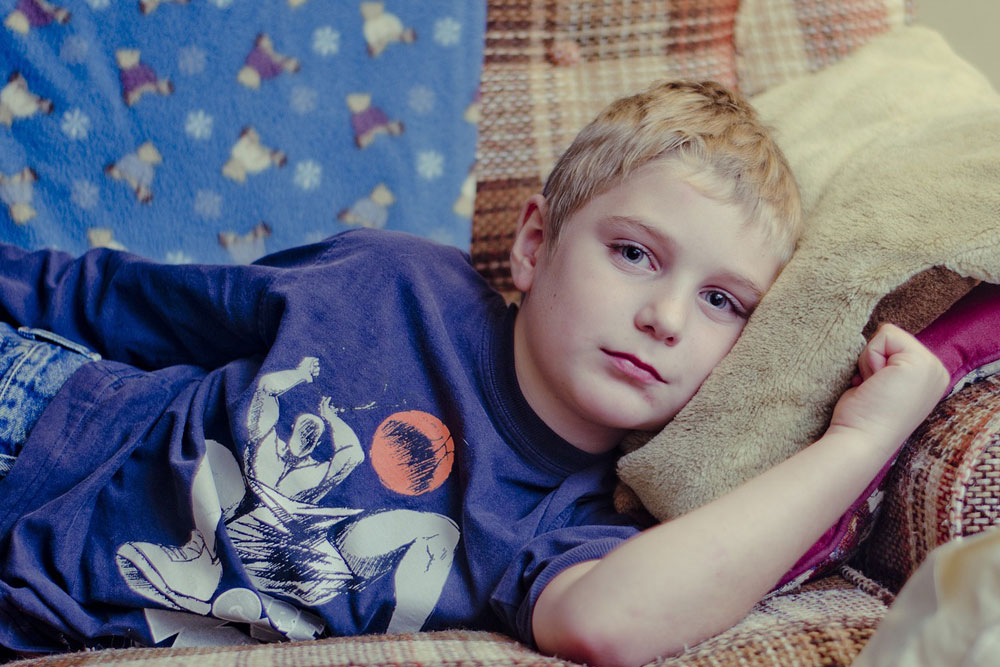Defining Trauma In Children
Published on September 8th, 2015
Updated on January 3rd, 2024

As parents, we seek to protect our children from harm and preserve their innocence as long as possible. After all, childhood is fleeting. The responsibility and weightiness of adulthood arrive soon enough.
Perhaps the most frightening thing about parenting is the ultimate lack of control we have. As hard as we try, we cannot determine the outcomes of our children’s lives. We want our children to be happy and often sacrifice our comforts to ensure theirs. We want our children to make good choices and try to instill values that shape a strong character. What if we do all the right things yet life still deals our child a particularly difficult set of circumstances?
Trauma In Children
No matter how attentive a parent you might be, no one can protect a child from an unexpected danger or crisis. Life can be insecure and is hardly bulletproof. When therapists or mental health clinicians help a child who is suffering the effects of their steady world having turned “upside down,” they might say the child is suffering the effects of trauma or a traumatic event.
Sponsored by

Choose a therapist to work with and start healing with 20% off from BetterHelp.
Click HereTrauma is usually, but not always, sudden and unexpected. It is perceived as dangerous and threatens a child’s ability to cope or maintain any sense of control. At the very heart of a traumatic response is a child’s anxious sense that things are not okay.
A traumatized child will seek to make it known that all is not well in their world. Oftentimes, Their behaviors will clue a parent into this very fact: something is not right. Key components of trauma include:
- Intense feelings of helplessness
- Terror
- Lack of control
Trauma is different for everyone. What is traumatic for one child may simply be difficult or uncomfortable for another. Keeping this in mind, traumatic events may include, but are not limited to:
- The unexpected loss of a loved or familiar person
- School violence
- Domestic violence
- Community violence
- Neglect
- Physical abuse
- Sexual abuse
- Natural disasters
Warning Signs Of Child Trauma
A child who has been through trauma may not tell their parents about it right away but will show warning signs that something is not right and that your child is not okay. Knowing these warning signs is an important part of keeping them safe and ensuring that they get the care that they need.
Reactions to trauma are often identified through changes in their behavior. The severity of these warning signs may depend on the child’s resilience to stress and whether the trauma is recurring. The following are warning signs of child trauma:
- Sudden resistance to being separated from parents
- Crying spells and unusual tantrums
- Changes in appetite
- Weight gain or loss
- Nightmares and/or bed wetting
- Becoming more anxious than normal
- Feeling depressed
- Self-isolating
- Appearance of new or sudden fears
- Sudden resistance to certain triggers
- Acting out in school or at home
For some children, these reactions can interfere with their daily life and ability to function and interact with others.
Note: Sometimes, a child may not display significant warning signs for trauma. Regularly check in with your child, even if they seem okay. Encourage open lines of communication by creating a safe environment to talk about difficult things.

What Parents Can Do
As parents and caregivers, how should we respond to a traumatized child? The caregiver or parental response to a child’s trauma is a key element in their healing. To provide a helpful response for your child, remember two key things:
1. Trauma is something children CAN recover from. Parents often wonder: “Is my child ever going to be okay?” The life of a child is an extraordinarily hopeful one. They have a tremendous capacity to learn, digest, take in, and absorb new experiences. While therapists have no magic wands, nor can they predict the future, there is hope for recovery with the proper mental health treatment.
2. Internalizing your child’s trauma makes it more difficult for your child. It is undeniable that a traumatized child most often means a traumatized family. The bond between parent and child is too strong to suppose that a pained child would create no emotional response in their parent.
It is the parent’s job to keep their emotions in check or at least keep them private. This can be difficult, but it’s important to practice. When a child’s world is upside down, they need consistent, steady, and patient love, not over-the-top emotional responses.
Example: Mom’s crying fits in response to learning about her child’s trauma would further a child’s sense that all is not well. Consider what would happen if mom instead is tender and patient and provides reassurance that “this might be hard, but we are going to get through it together”. The parent’s strong, authoritative approach can instill confidence in the child. They feel safe and hopeful that things will be okay. Most importantly, they do not feel responsible for mom’s feelings or pain.
Final Note
As a departing word, take time to find a mental health professional that you trust. You may want to ask the professional the following questions:
- Is your approach trauma-focused?
- Does your method address the behaviors or feelings you are observing in your child?
- Is your approach based on the latest clinical research?
You also want to make sure that your child feels comfortable with the professional that you choose. Kids are often hesitant to talk about their trauma, so a child-friendly professional should be warm, inviting, and kind. Your child should feel safe to work with the professional, and comfortable enough to open up to them about their experience.
Sponsored by

Find an affordable therapist online with 20% off from BetterHelp.
Click Here






Leave A Reply